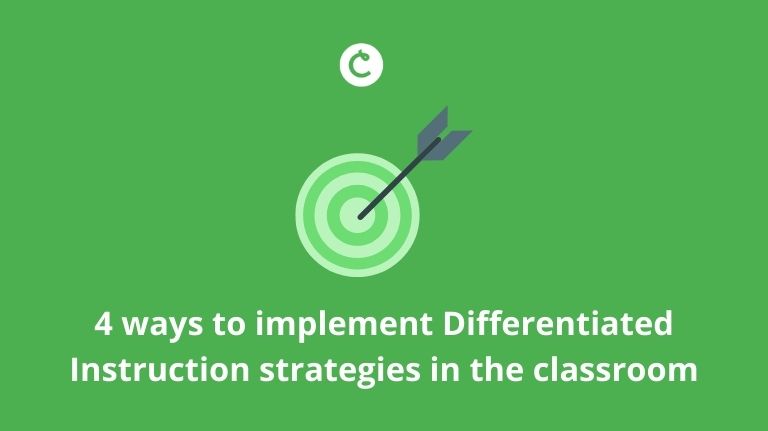4 ways to implement Differentiated Instruction strategies in the classroom
When it comes to engaging all of your students, you’ve probably realized that students learn in different ways. Some may work best when engaged in group work, while you may find others that perform best when working on their own. If this is the case, differentiated instruction and assessment, also known as differentiated learning, is the framework you need to reach students through different avenues of learning.

The term differentiated instruction was introduced in the late 1990s by Carol Tomlinson, who describes differentiation:
At its most basic level, differentiating instruction means “shaking up” what goes on in the classroom so that students have multiple options for taking in information, making sense of ideas, and expressing what they learn. In other words, a differentiated classroom provides different avenues to acquiring content, to processing or making sense of ideas, and to developing products so that each student can learn effectively. (Tomlinson 2001)
While integrating scaffolding strategies is centered around the class as a whole, providing structures to clarify learning objectives, differentiated instruction provides individual students with specific steps towards taking control of their learning experience. This framework requires you to assess how your lessons affect students before, during, and after class. Tomlinson describes four ways to differentiate the learning experience. Here we’ll walk you through a list for implementing these four differentiation strategies into your classroom:
1. Create a differentiated learning environment – The first differentiation technique changes the physical layout of the classroom. Organize your classroom into flexible workstations. This will require you to move furniture around to support both individual and group work. For example, you can create a teaching table where teacher-led instruction will take place. This workstation would be focused on teaching new, challenging material.
2. Prepare thoughtful lessons backed by data – Before you even begin teaching each lesson, you should examine past assessments, collected data, work samples, and student observations to identify specific instructional strengths for each student. Then you can change the process of the learning experience by assigning different tasks to different learners. A good way to differentiate the learning process is to have a series of tiered assignments for each of your lessons. By creating a variety of related tasks at varying difficulty, you’ll be able to give specific tasks to certain groups or individual students based on their skill level. They can then work their way up to the highest assignment. You’ll want to make sure that you’re continually assessing students’ progress with Classtime and providing them with relevant feedback that will help them work towards their educational goals.
Quick Tip: With Classtime, you can keep multiple question sets organized in your library and easily assign tiered tasks to different groups and individuals. Plus, the PDF and Excel session exports will keep all of your lesson’s data organized so you can easily assess and adapt.
3. Tailor assignments based on students’ learning goals – Using differentiation strategies to shake up the end product that students turn in for assignments can also help you reach different learners. Some students are visual learners, while others may be auditory learners or readers. You can offer students different avenues to present their understanding of the lesson based on how they learn the material. For example, some visual learners may want to create a poster to show their understanding of Newton’s first law of motion (inertia), while readers may prefer to write a paper or auditory learners may want to give an oral presentation.
4. Adjust your lesson content based on student needs – The most apparent way of differentiating the learning process is to change the type of content you use in your lessons. During a lecture discussing Lady Macbeth’s morality, you may see that certain students aren’t paying attention, or are completely lost. Switch the content up by using computer programs, audio recordings, videos or even making it an interactive lesson by having students act out scenes from the play.
Remember, it’s important to keep your eyes and ears open when using differentiated instruction. You’ll need to constantly assess how your efforts are affecting your students while keeping the discussion open and engagement high. Differentiated instruction takes a lot of planning, but with continuous assessment and varying strategies, you’ll be able to accommodate all of your students’ learning styles.
Classtime can help you get started with differentiated instruction in the classroom today.


Palaniappan. K
April 28, 2018 at 8:45 amThis Method Is Very Helpful To The Students.